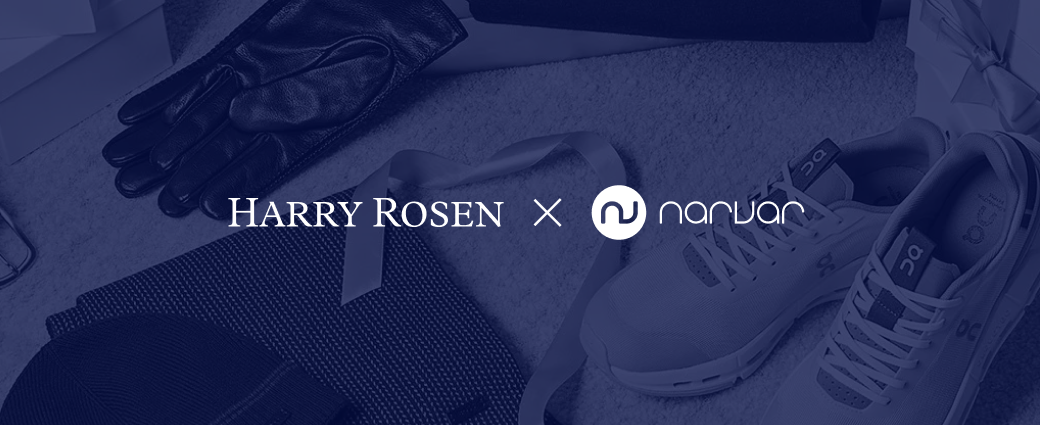
AI-powered delivery date estimates to boost conversion
Give shoppers peace of mind and protect and grow your bottom line
Personalized tracking experiences to build brand loyalty
Returns and exchanges management to mitigate fraud and reward best customers
Proactive communication to drive customer lifetime value
Delivery claim management to tackle fraud and build trust
Checklist: How To Reduce Apparel and Footwear Returns

According to the National Retail Federation, 20.8% of ecommerce purchases were returned in 2021.
And a 2019 survey from e-commerce marketing platform Yotpo found that 88% of shoppers had returned fashion items purchased online in the prior year, with 51% returning between $50 and $500 of merchandise.
(“Fit” and “quality” were the top reasons cited for returns, and almost half of respondents said that their purchases looked different in person than online.)
Which is why if you’re trying to reduce apparel and footwear returns in your ecommerce business, you need to start by getting serious about your product detail pages.
Almost EVERY online shopper considers accuracy in the product detail page to be “important” or “very important” to their experience.
- 93% of shoppers consider photos “important” or “very important.”
- 25% of ecommerce photos lack sufficient resolution for shoppers to properly zoom and view the product
- 72% of ecommerce shoppers want to see real customers’ images and more sizing and fit information
So, with all of that said, use the following checklist if you’re ready to start improving your product detail pages and reducing the number of returns you’re forced to process.
#1 - Invest in better photography
Ecommerce retailers use strategic lighting, pinning, and clipping to optimize the depiction of their apparel and footwear. But sometimes, doing so creates an unrealistic expectation of what a given product actually looks like.
Therefore, ecommerce retailers should adhere to the following best practices when it comes to photography:
- Depict each product a variety of angles—front, back, and side at a minimum.
- Include images of products on a variety of models to depict different body types, genders, skintone, etc. so shoppers get a clear idea of how something will look on their own bodies.
- Use close-up imagery to highlight material, stitching, pleating, ruching, etc.
- 360-degree views of products through video or turntable photography.
- Support hover and zoom viewing that incorporates high-resolution imagery (2000 x 2000 pixels).
#2 - Share more details on your descriptions
In addition to style specifics and fabric content and care, comparative details, like the fit model’s size, can help shoppers break the habit of bracketing, reducing returns in the process.
Reformation is just one of the many retailers that includes the model’s height, waist, hips, and bust measurement, in addition to the size garment they’re wearing in the photo.
Suitsupply includes the model’s height and chest measurement in jacket sizing. If a customer is usually a size large, but sees that the model, who has similar measurements, is a medium, the customer may realize they need to to size down.
Retailers should also consider including sustainability data in product descriptions. A Global Sustainability Study conducted by Simon-Kucher & Partners found that 85 percent of people shifted their purchase behavior towards being more sustainable in the past five years, while 61 percent of Americans cite sustainability as an important purchase criterion.
Thorough product descriptions include the following information:
- Common vernacular descriptions of the style of garment or shoe, i.e. “loafer,” “maxi dress,” “straight-leg jean.”
- Product specifics like color, material composition, finishing details, care instructions, country of origin, and sustainability.
- Model(s) measurements and sizes worn in photos.
- A size up, size down, or true to size recommendation for the convenience of repeat shoppers.
- For apparel, a numeric length measurement, including separate measurements for petite/short, regular, and tall sizing, when applicable.
#3 - Incorporate customer reviews
An NIH study found that customer reviews can “reduce the risk of mismatch” between a customer’s expectation for the product and reality.
A similar study done by Northwestern University found that retailers who include a “star rating” of 3 or higher on product detail pages see more purchases than retailers who don’t include a star rating.
Much like product descriptions, reviews (especially those with customers’ own photos) offer prospective shoppers comparative data points.
Rent the Runway, whose business model depends on getting a customer’s size right the first time, uses customer reviews exceptionally well.
Each review includes the customer’s height, weight, bust size, body type, and age data, and asks the reviewer to include the size garment they wore, their usual size, how the garment fit, and the occasion for wearing the garment. Prospective renters can browse the reviews for past customers with similar body types to select the correct size.
The most valuable product reviews include the following:
- Star rating of the product on a 1-5 scale.
- Reviewer’s age, measurements/size, usual size in the item, and size purchased.
- Fit scale, (i.e. too small, too big, true to size).
- Reviewer’s own photos wearing the item.
- The customer’s impressions of the product.
In closing…
Ecommerce demands that customers take a leap of faith—accepting that the retailer’s photography and product descriptions are accurate, and the quality is satisfactory.
Enhancing product pages with more information on the front end—and updating them with the sizing information retailers receive through post-purchase feedback or returns—can bridge the gap and help minimize apparel and footwear returns in the future.
Ecommerce is a fluid process, not just in terms of the purchase and return of goods, but in the transfer of information. Schedule a free Narvar demo and learn how to leverage customer reviews and data to boost business.
























